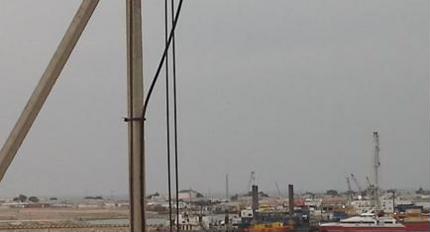Documents
This section features public documents and files uploaded by the stakeholders and custodians of the Caspian Sea environment.
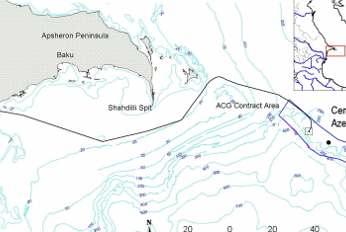 Central Azeri Environmental Survey July 2010 AmC Project 10502Tue, 17/04/2018 - 15:02Sampling was conducted from the vessel Svetlomor 2 by personnel from AmC, the Ministry of Ecology and Natural Resources (MENR) and SOCAR. Sediment samples for physical and chemical analysis consisted of 2 replicates, while 3 replicates were taken for biological analyses. Analyses were carried out at AmC Caspian Environmental+5
Central Azeri Environmental Survey July 2010 AmC Project 10502Tue, 17/04/2018 - 15:02Sampling was conducted from the vessel Svetlomor 2 by personnel from AmC, the Ministry of Ecology and Natural Resources (MENR) and SOCAR. Sediment samples for physical and chemical analysis consisted of 2 replicates, while 3 replicates were taken for biological analyses. Analyses were carried out at AmC Caspian Environmental+5
- Description
Sampling was conducted from the vessel Svetlomor 2 by personnel from AmC, the Ministry of Ecology and Natural Resources (MENR) and SOCAR. Sediment samples for physical and chemical analysis consisted of 2 replicates, while 3 replicates were taken for biological analyses. Analyses were carried out at AmC Caspian Environmental Laboratory.
Sediments around Central Azeri were very poorly sorted, the majority being a mixture of sand and gravel. At many stations, the two replicates were substantially different, indicating patchiness of physical characteristics on a small spatial scale (metres).
LAO was detected at 7 stations in 2010. There was little evidence of change at the majority of stations, and the overall area within which LAO was observed remains very similar to that observed in previous surveys. In general the hydrocarbon concentrations were low or very low and UCM and NPD content were indicative of weathered material being present throughout the survey area.
For the majority of trace metals the data show no clear trends or gradients which could be associated with platform activities. Three elements – barium, cadmium, and lead – exhibited very similar concentration patterns. These were the only elements which indicated a ‘footprint’ which was spatially related to the platform location. A similar association was evident in the 2008 data.
The macrobenthic community was numerically dominated by amphipods which were also the most taxonomically rich group. There was a general tendency towards lower species richness and abundance at stations to the north of, and immediately to the south of, the platform, as was also noted in 2008.
The 2010 data for sediment composition, chemistry and macrobenthic biology suggest that there is an area immediately around the platform in which some degree of sediment alteration is present, and where there is a slightly lower macrobenthic community biomass and diversity relative to more distant stations. However, there are no stations which could be considered biologically impoverished compared to previous surveys.
- Attached documents
- Metadata
- Year
- 2012
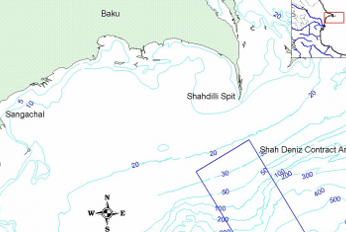 Post Drill Environmental Survey August 2010 AmC Project 10804Tue, 17/04/2018 - 13:32Technical Summary Sampling was conducted from the vessel Svetlomor 2 by personnel from AmC, the Ministry of Ecology and Natural Resources (MENR) and SOCAR. Sediment samples for physical and chemical analysis consisted of 2 replicates, while 3 replicates were taken for biological analyses. Analyses were carried out at AmC Ca+5
Post Drill Environmental Survey August 2010 AmC Project 10804Tue, 17/04/2018 - 13:32Technical Summary Sampling was conducted from the vessel Svetlomor 2 by personnel from AmC, the Ministry of Ecology and Natural Resources (MENR) and SOCAR. Sediment samples for physical and chemical analysis consisted of 2 replicates, while 3 replicates were taken for biological analyses. Analyses were carried out at AmC Ca+5
- Description
Technical Summary
Sampling was conducted from the vessel Svetlomor 2 by personnel from AmC, the Ministry of Ecology and Natural Resources (MENR) and SOCAR. Sediment samples for physical and chemical analysis consisted of 2 replicates, while 3 replicates were taken for biological analyses. Analyses were carried out at AmC Caspian Environmental Laboratory.
In general the survey stations around the SDX-5 well site were found to have well sorted very fine silt sediments with low variation in metal and hydrocarbon concentrations.
Relationships were found to be present between metals Cr, Cu, Fe, Mn, Pb and Zn. With the exception of phenols all hydrocarbon parameters were interrelated, with the proportions of UCM and NPD indicating that all hydrocarbons present were weathered.
The macrobenthic community had a low abundance and species richness and was characteristic of the area and depth. Overall no relationship was found to exist between any of the measured variables and the community structure, with the low species richness and abundance likely being due to the depth of the survey area exceeding 500m.
Comparison to previous baseline data indicated change at one station adjacent to the well location. Samples from this station indicated the presence of WBM contaminated drill cuttings, with coarser grained sediments, very high concentrations of Ba and the absence of the metal relationships evident at all other stations.
Hydrocarbon analysis of samples from this position revealed an LAO signature indicating the presence of SBM in addition to the WBM. These samples also had a high proportion of NPD which suggests the likely presence of cuttings contaminated with LAO and also reservoir fluids.
LAO was detected in one other sample and two stations had slightly elevated concentrations of Ba.
- Attached documents
- Metadata
- Year
- 2011
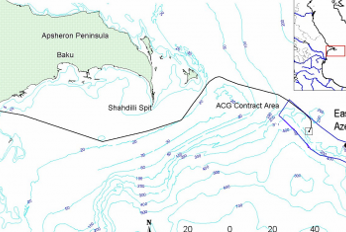 East Azeri Environmental Survey July/August 2010 AmC Project 10503Mon, 16/04/2018 - 16:17Technical Summary Sampling was conducted from the vessel Svetlomor 2 by personnel from AmC, the Ministry of Ecology and Natural Resources (MENR) and SOCAR. Sediment samples for physical and chemical analysis consisted of 2 replicates, while 3 replicates were taken for biological analyses. Analyses were carried out at AmC Ca+5
East Azeri Environmental Survey July/August 2010 AmC Project 10503Mon, 16/04/2018 - 16:17Technical Summary Sampling was conducted from the vessel Svetlomor 2 by personnel from AmC, the Ministry of Ecology and Natural Resources (MENR) and SOCAR. Sediment samples for physical and chemical analysis consisted of 2 replicates, while 3 replicates were taken for biological analyses. Analyses were carried out at AmC Ca+5
- Description
Technical Summary
Sampling was conducted from the vessel Svetlomor 2 by personnel from AmC, the Ministry of Ecology and Natural Resources (MENR) and SOCAR. Sediment samples for physical and chemical analysis consisted of 2 replicates, while 3 replicates were taken for biological analyses. Analyses were carried out at AmC Caspian Environmental Laboratory.
The sediments around East Azeri were very poorly sorted with generally good agreement between replicate samples.Variation between metal concentrations was low.
Metal and hydrocarbon concentrations were, with the exception of Ba and Cd, within the range of baseline conditions for the ACG contract area, and in many instances were lower in 2010 than in 2008.
The condition of the macrobenthic community throughout the survey area was, in 2010, better than in 2008, and was closer to the original baseline conditions. There was no evidence that any physical or chemical parameter was associated with impaired community structure or function, although it was clear that the dominant taxonomic groups were more diverse and abundant in coarser sediments.
Specifically, the results of the 2010 survey show no evidence of sustained impact as a result of continuing platform drilling and production operations; there has (with the possible exception of Cd) been no evidence of direct contamination, and the diversity, abundance and biomass of the macrobenthic community has improved since 2008.
- Attached documents
- Metadata
- Year
- 2012
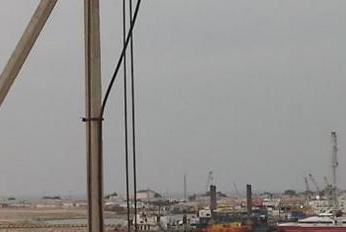 Chirag Environmental Survey 2010 Akvamiljø Caspian 10504Mon, 16/04/2018 - 15:37Sampling was conducted from the vessel Svetlomor 2 by personnel from AmC, the Ministry of Ecology and Natural Resources (MENR) and SOCAR. Sediment samples for physical and chemical analysis consisted of 2 replicates, while 3 replicates were taken for biological analyses. Analyses were carried out at AmC Caspian Environmental+6
Chirag Environmental Survey 2010 Akvamiljø Caspian 10504Mon, 16/04/2018 - 15:37Sampling was conducted from the vessel Svetlomor 2 by personnel from AmC, the Ministry of Ecology and Natural Resources (MENR) and SOCAR. Sediment samples for physical and chemical analysis consisted of 2 replicates, while 3 replicates were taken for biological analyses. Analyses were carried out at AmC Caspian Environmental+6
- Description
Sampling was conducted from the vessel Svetlomor 2 by personnel from AmC, the Ministry of Ecology and Natural Resources (MENR) and SOCAR. Sediment samples for physical and chemical analysis consisted of 2 replicates, while 3 replicates were taken for biological analyses. Analyses were carried out at AmC Caspian Environmental Laboratory.
The sediment characteristics and metal concentrations around Chirag were found to be highly variable within and between stations, with generally little change being observed from 2008. Despite the detection footprint remaining unchanged from previous years, LAO concentrations continue to reduce. THC and PAH concentrations were generally low, with the highest concentrations being recorded at stations directly to the northeast of the platform.
Ba concentrations were highest within the LAO contamination footprint, suggesting the higher concentrations to be the result of historical drilling discharges. As observed on previous years the concentration of Cd was also highest within this area. The LAO and Ba footprint, indicating the extent of contamination from platform drilling discharges was found to extend 1250m NE, 500m N, 750m E, 1000m W and 250m S of the Chirag platform position.
The 2010 macrobenthic community was numerically dominated by polychaetes and amphipods.
Abundance and species richness were highest at stations on the periphery of the survey area and decreased towards the platform. The lowest abundance an taxonomic richness were found at stations within the LAO and Ba footprint, with the sparsest communities being present at stations directly to the northeast of the platform. Despite a continual reduction in hydrocarbon concentrations from 2006, a general reduction in abundance and taxonomic richness has been observed at the Chirag survey area from 2000 to 2008. This negative trend has reversed in 2010, with a survey wide increase in annelid abundance and amphipod abundance and taxonomic richness being observed. No distinct change in the physicochemical characteristics has been observed between 2008 and 2010 that can be attributed to the abrupt reversal of these trends.
No additional physicochemical impacts from operational activities have been observed between 2008 and 2010 and in general contamination levels continue to reduce
- Attached documents
- Metadata
- Year
- 2010
Document
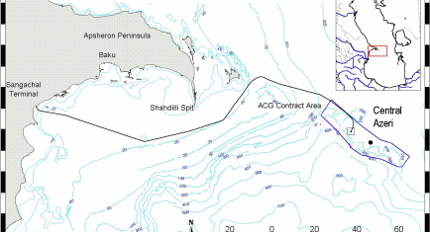
Central Azeri Environmental Survey July 2010 AmC Project 10502
Document
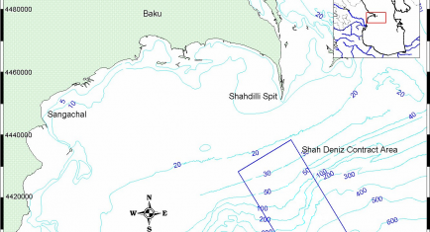
Post Drill Environmental Survey August 2010 AmC Project 10804
Document
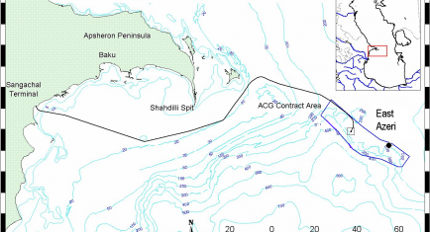
East Azeri Environmental Survey July/August 2010 AmC Project 10503
Document
